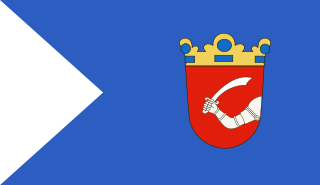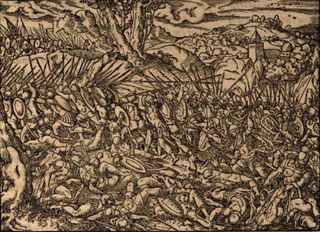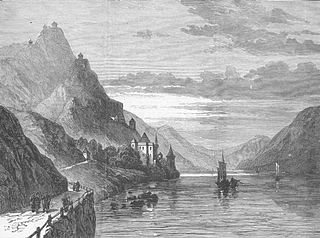
Mehmed II, commonly known as Mehmed the Conqueror, was twice the sultan of the Ottoman Empire from August 1444 to September 1446 and then later from February 1451 to May 1481.

Matthias I, or Matthias Corvinus, was King of Hungary and Croatia from 1458 to 1490. After conducting several military campaigns, he was elected King of Bohemia in 1469 and adopted the title Duke of Austria in 1487. He was the son of John Hunyadi, Regent of Hungary, who died in 1456. In 1457, Matthias was imprisoned along with his older brother, Ladislaus Hunyadi, on the orders of King Ladislaus the Posthumous. Ladislaus Hunyadi was executed, causing a rebellion that forced King Ladislaus to flee Hungary. After the King died unexpectedly, Matthias's uncle Michael Szilágyi persuaded the Estates to unanimously proclaim the 14-year-old Matthias as king on 24 January 1458. He began his rule under his uncle's guardianship, but he took effective control of government within two weeks.

Stephen Tomašević or Stephen II was the last sovereign from the Bosnian Kotromanić dynasty, reigning as Despot of Serbia briefly in 1459 and as King of Bosnia from 1461 until 1463.

The rise of the Ottoman Empire is a period of history that started with the emergence of the Ottoman principality in c. 1299, and ended c. 1453. This period witnessed the foundation of a political entity ruled by the Ottoman Dynasty in the northwestern Anatolian region of Bithynia, and its transformation from a small principality on the Byzantine frontier into an empire spanning the Balkans, Anatolia, Middle East and North Africa. For this reason, this period in the empire's history has been described as the "Proto-Imperial Era". Throughout most of this period, the Ottomans were merely one of many competing states in the region, and relied upon the support of local warlords Ghazis and vassals (Beys) to maintain control over their realm. By the middle of the fifteenth century the Ottoman sultans were able to accumulate enough personal power and authority to establish a centralized imperial state, a process which was brought to fruition by Sultan Mehmed II. The conquest of Constantinople in 1453 is seen as the symbolic moment when the emerging Ottoman state shifted from a mere principality into an empire therefore marking a major turning point in its history.

The siege of Belgrade, or siege of Nándorfehérvár was a military blockade of Belgrade that occurred 4–22 July 1456 in the aftermath of the fall of Constantinople in 1453 marking the Ottomans' attempts to expand further into Europe. Led by Sultan Mehmed II, the Ottoman forces sought to capture the strategic city of Belgrade, which was then under Hungarian control and was crucial for maintaining control over the Danube River and the Balkans.

The Second Battle of Kosovo was a land battle between a Hungarian-led Crusader army and the Ottoman Empire at Kosovo field that took place from 17–20 October 1448. It was the culmination of a Hungarian offensive to avenge the defeat at Varna four years earlier. In the three-day battle the Ottoman army under the command of Sultan Murad II defeated the Crusader army of regent John Hunyadi.

A series of military conflicts between the Ottoman Empire and various European states took place from the Late Middle Ages up through the early 20th century. The earliest conflicts began during the Byzantine–Ottoman wars, waged in Anatolia in the late 13th century before entering Europe in the mid-14th century with the Bulgarian–Ottoman wars. The mid-15th century saw the Serbian–Ottoman wars and the Albanian-Ottoman wars. Much of this period was characterized by Ottoman expansion into the Balkans. The Ottoman Empire made further inroads into Central Europe in the 15th and 16th centuries, culminating in the peak of Ottoman territorial claims in Europe.

The Classical Age of the Ottoman Empire concerns the history of the Ottoman Empire from the Conquest of Constantinople in 1453 until the second half of the sixteenth century, roughly the end of the reign of Suleiman the Magnificent. During this period a system of patrimonial rule based on the absolute authority of the sultan reached its apex, and the empire developed the institutional foundations which it would maintain, in modified form, for several centuries. The territory of the Ottoman Empire greatly expanded, and led to what some historians have called the Pax Ottomana. The process of centralization undergone by the empire prior to 1453 was brought to completion in the reign of Mehmed II.

Usora was important zemlja of the medieval Bosnian state, first banate and later kingdom, although it also had some periods outside its jurisdiction and royal authority, when it was connected with neighboring banates of Slavonia, or Mačva at times. The administrative seat of this zemlja was Srebrenik, which also served as residence for its rulers for entire period of existence of the medieval Bosnian state. It took its name from the river Usora.

The Ottoman–Hungarian Wars were a series of battles between the Ottoman Empire and the medieval Kingdom of Hungary. Following the Byzantine Civil War, the Ottoman capture of Gallipoli, and the decisive Battle of Kosovo, the Ottoman Empire was poised to conquer the entirety of the Balkans and also sought and expressed desire to expand further north into Central Europe beginning with the Hungarian lands.

The First Ottoman–Venetian War was fought between the Republic of Venice with its allies and the Ottoman Empire from 1463 to 1479. Fought shortly after the capture of Constantinople and the remnants of the Byzantine Empire by the Ottomans, it resulted in the loss of several Venetian holdings in Albania and Greece, most importantly the island of Negroponte (Euboea), which had been a Venetian protectorate for centuries. The war also saw the rapid expansion of the Ottoman navy, which became able to challenge the Venetians and the Knights Hospitaller for supremacy in the Aegean Sea. In the closing years of the war, however, the Republic managed to recoup its losses by the de facto acquisition of the Crusader Kingdom of Cyprus.

The Hundred Years' Croatian–Ottoman War is the name of a sequence of conflicts, mostly of relatively low intensity, between the Ottoman Empire and the medieval Kingdom of Croatia, and the later Habsburg Kingdom of Croatia. Except for periods of "small" borderland warfare, the conflict also saw episodes of major conquest campaigns of Croatian land undertaken by the Ottomans especially during the 16th century.

King of Rama was a title used by the monarchs of Hungary to provide a legal basis for their pretence of supremacy over Bosnia. The title refers to the river Rama, a small tributary of the Neretva. A state called Rama never existed; the title of King of Rama became incorporated into the royal style of the Hungarian monarchs due to some kind of misunderstanding.
The Ottoman conquest of Bosnia and Herzegovina was a process that started roughly in 1386, when the first Ottoman attacks on the Kingdom of Bosnia took place. In 1451, more than 65 years after its initial attacks, the Ottoman Empire officially established the Bosansko Krajište, an interim borderland military administrative unit, an Ottoman frontier, in parts of Bosnia and Herzegovina. In 1463, the Kingdom fell to the Ottomans, and this territory came under its firm control. Herzegovina gradually fell to the Ottomans by 1482. It took another century for the western parts of today's Bosnia to succumb to Ottoman attacks, ending with the capture of Bihać in 1592.

The Battle of Ohrid took place on 14 or 15 September 1464 between Albanian ruler Skanderbeg's forces and Ottoman forces. A crusade against Sultan Mehmed II had been planned by Pope Pius II with Skanderbeg as one of its main leaders. The battle near Ohrid occurred as a result of an Albanian incursion into Ottoman territory. The Ottomans stationed in the area were assaulted by Skanderbeg's men and 1,000 Venetian soldiers under Cimarosto. The Ottomans were lured out of their protections in Ohrid and ambushed by the Albanian cavalry. Skanderbeg won the resulting battle and his men earned 40,000 ducats after captured Ottoman officers were ransomed. Pius II died before the planned crusade began, however, forcing Skanderbeg to fight his battles virtually alone.

The siege of Jajce was a siege of the town of Jajce and its citadel in 1463, in a push by Ottomans to conquer as much of the Bosnian Kingdom, and continuation of the Ottoman–Hungarian Wars. After the fall of Travnik and royal fortress of Bobovac, in the initial days of invasion, Ottomans, led by Sultan captured the town. One of the parties pursued Bosnian King Stjepan Tomašević, and caught up with him at Ključ fortress, after which he was brought to Jajce and executed. Soon the Ottomans forces withdraw, leaving the town under the protection of a small garrison. The Hungarian took the opportunity to capture the citadel, and this meant that Ottoman advancement in Bosnia was halted for the time being. The northern part of Bosnia were brought under Hungarian control, and divided into three administrative regions, Banate of Jajce, Banate of Srebrenik, established around Srebrenik fortress, and a puppet statelet named "Bosnian Kingdom". This situation and Jajce under Hungarian garrison will last until 1527 when the Ottomans finally took the town, and breaking the lines advanced northward to Hungary and westward to Bihać, which was part of the Kingdom of Croatia.

Pavle Bakić was the last titular Despot of Serbia. He was one of the most notable military commanders among Serbian nobility in the Kingdom of Hungary, and fought against the Ottoman Empire in several battles, most notably at the Battle of Mohács (1526) and the Battle of Vienna (1529). He fell at the Battle of Gorjani (1537).

The Battle of Zlatitsa was fought on 12 December 1443 between the Ottoman Empire and Serbian and Hungarian troops in the Balkans as part of the larger Crusade of Varna. The battle was fought at Zlatitsa Pass near the town of Zlatitsa in the Balkan Mountains, Ottoman Empire. The impatience of the King of Poland and the severity of the winter then compelled John Hunyadi to return home in February 1444, but not before he had utterly broken the Sultan's power in Bosnia, Herzegovina, Serbia, Bulgaria, and Albania.
Minnetoğlu Mehmed Bey was an Ottoman Bosnian general and the first governor of the Sanjak of Bosnia, serving Sultan Mehmed II. He was of Turkish origin.

Battle of Zvornik or Siege of Zvornik was a battle that took place during the second Bosnian campaign of Mehmed the Conqueror in 1464.

















